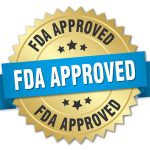
Previous
How Dry Cleaning Impacts Liver Health

Next
Liver Disease Bulletin: Rheumatoid Arthritis Drug Harms the Liver
Surviving a Heat Wave With Advanced Liver Disease
Defined as excessive periods of heat, often combined with excessive humidity, heat waves are becoming increasingly common – and they are particularly hazardous to those with advanced forms of liver disease.
Our summers seem to be getting hotter and hotter. Scientists acknowledge this trend as a direct result of global warming; physicians are treating more patients with heat-related illnesses and health advocates recognize that the public must learn how to cope with these extreme temperatures. While children and the elderly are particularly susceptible to high heat, so are individuals with advanced liver disease. Thus, knowing how to prevent, detect and address heat-related illness is a must this summer for anyone with impaired liver function.
About Heat-Related Illnesses
Maintaining a stable body temperature is an absolute necessity. Perspiration and increased blood flow to the skin are two methods the body uses to keep itself cool when the mercury climbs. Heat-related illnesses (hyperthermia) occur when the body can no longer transfer enough heat to keep itself cool. Hyperthermia differs from a fever, because a fever is a controlled immune system response, while hyperthermia is not controlled – and body temperature can continually (and dangerously) rise.
There are three basic levels of hyperthermia:
1. Heat Cramps – Heat cramps are a sign of dehydration that accompany excessive heat production. Characterized by muscular pains and spasms due to heavy exertion, heat cramps are often the first indication that the body is having trouble with the heat.
2. Heat Exhaustion – Heat exhaustion typically occurs when people exercise heavily or work in a hot, humid place where body fluids are lost through heavy sweating. Blood flow to the skin increases, causing blood flow to decrease to the vital organs. If not treated, the condition will worsen, with body temperature continuing to rise and possibly leading to heat stroke.
3. Heat Stroke – Also called sunstroke, heat stroke is a medical emergency. Body temperatures can rise to 104 degrees Fahrenheit or higher, which can be fatal if the core temperature is not quickly and carefully reduced.
Liver Disease Susceptibility
A person’s tolerance to heat depends on the cooperation of several physiological factors. The two primary organs involved in temperature regulation, are:
1. Skin – where sweating and heat exchange take place
2. Cardiovascular System – which must greatly increase blood flow to shunt heat from the core to the surface, while still meeting the metabolic demands of exercise
Unfortunately, both of these organ systems are already stressed in those with advanced liver disease – even in temperate environments. In addition, a person with chronic liver disease may have edema from cirrhosis. This additional fluid in the body complicates its efforts to maintain fluid balance, which could further exacerbate heat-related illness.
Most heat disorders occur because of heat overexposure or over-exercising. Because they are vulnerable to extreme heat, those with advanced liver disease should know how to prevent heat-related illnesses, be on the lookout for its signs and know the appropriate action to take.
Hyperthermia Prevention
To prepare for problems from and deal with extreme heat, the following suggestions can prevent or lessen hyperthermia:
· Stay indoors in air conditioning
· Cover sun-receiving windows
· Limit sun exposure
· Stay on the first floor of your dwelling
· Eat well-balanced, light and regular meals
· Avoid using salt tablets unless directed to do so by a physician
· Drink plenty of water unless on a fluid-restricted diet – in that case, consult a physician about increasing water intake
· Avoid caffeine
· Reschedule outdoor, vigorous exercise
Hyperthermia Signs and Required Action
For each stage of heat-related illness, the signs and suggested first aid actions are described below:
· Heat Cramps – Signs include painful spasms, usually in the leg and abdominal muscles that are accompanied by heavy sweating. If heat cramps are evident, relocate to a cooler location, lightly stretch and gently massage the affected muscles and take sips of up to a half glass of cool water (not caffeine or alcohol) every 15 minutes. If nauseated, discontinue liquids.
· Heat Exhaustion – Signs include heavy sweating but skin may be cool, pale or flushed, a weak pulse, fainting or dizziness, nausea, vomiting, exhaustion and headache. If heat exhaustion is suspected, lie down in a cool place with a fan or air conditioning, loosen or remove clothing, apply cool, wet clothes, take sips of water like with heat cramps (must be consumed slowly), discontinue if nauseated and seek immediate medical attention if vomiting occurs.
· Heat Stroke – Signs include a high body temperature (104 degrees Fahrenheit and up), hot, red, dry skin, rapid, weak pulse and rapid, shallow breathing. There will likely not be any sweat unless it is from a recent strenuous activity. The person may be unconscious. If heat stroke is suspected, get immediate medical help as any delay could be fatal. In the interim, the person should be moved to a cooler location, his or her clothing removed, a cool bath or cloth applied to reduce temperature and he or she must be watched for breathing problems.
Especially important if you have or care for someone with advanced liver disease, make sure you are aware of the stages, indications and first aid for hyperthermia this summer. Because record-breaking temperatures are becoming the norm in most areas of the world, a refresher in hot weather safety could make a life or death difference to those with liver disease – and anyone else who is particularly susceptible to extreme heat.
http://firstaid.webmd.com/tc/heat-related-illnesses-topic-overview, Heat-Related Illnesses - Topic Overview, Retrieved August 4, 2010, WebMD, LLC, 2010.
http://www.annecollins.com/weight_health/water-retention-causes.htm, Guide to Causes of Water Retention, Retrieved August 2, 2010, Anne Collins, 2010.
http://www.caregiver.org/caregiver/jsp/content_node.jsp?nodeid=871, Hot Weather Tips, Retrieved August 3, 2010, Family Caregiver Alliance, 2010.
http://www.epidemic.org/theFacts/theLiver/waterBalance/, The Regulation of Water Balance, Retrieved August 4, 2010, Trustees of Dartmouth College, 2010.
http://www.fema.gov/areyouready/heat.shtm, Are You Ready?, Retrieved August 3, 2010, US Department of Homeland Security, 2010.
http://wwwnc.cdc.gov/travel/yellowbook/2010/chapter-2/problems-with-heat-and-cold.aspx, Problems with Heat and Cold, Howard D. Backer, David R. Shlim, Retrieved August 4, 2010, US Centers for Disease Control and Prevention, 2010.
http://www.nws.noaa.gov/om/brochures/heat_wave.shtml, Heat Wave: A Major Summer Killer, Retrieved August 2, 2010, National Weather Service Office of Climate, Water and Weather Services, 2010.
http://www.qualityhealth.com/diabetes-articles/diabetes-summer-tips-manage-diabetes-heat, Diabetes in Summer: Tips to Manage Diabetes in the Heat, Kay Uzoma, Retrieved August 2, 2010, QualityHealth.com, 2010.









